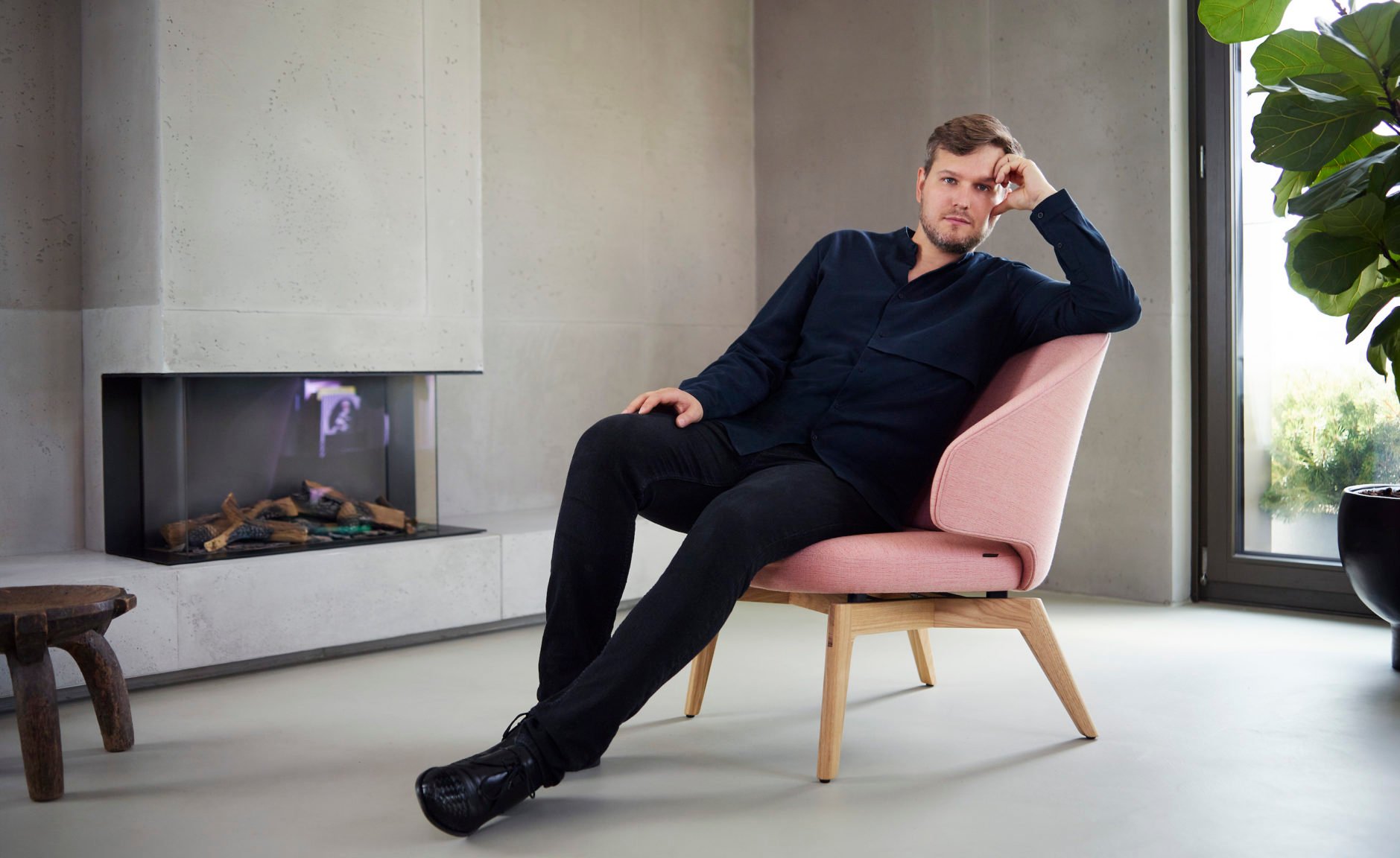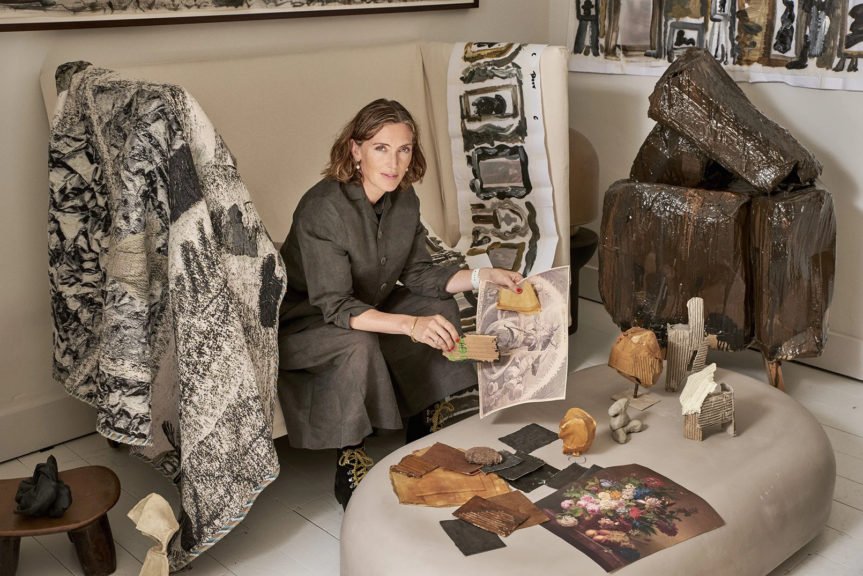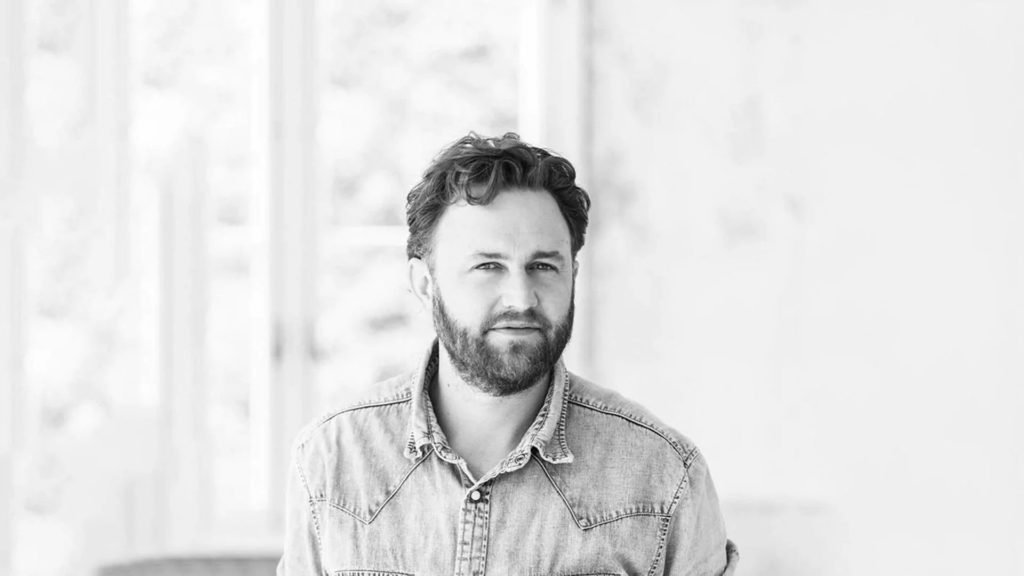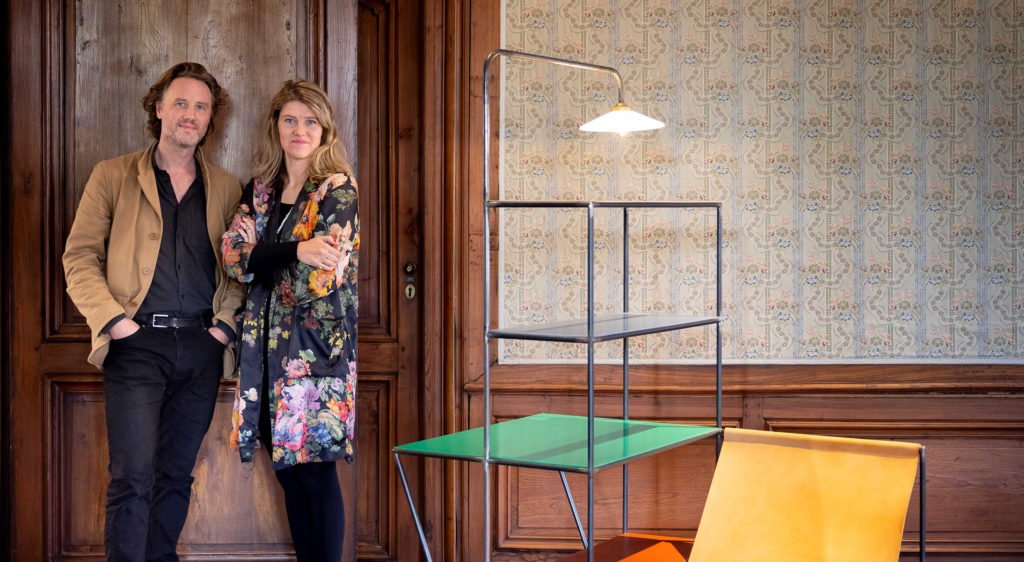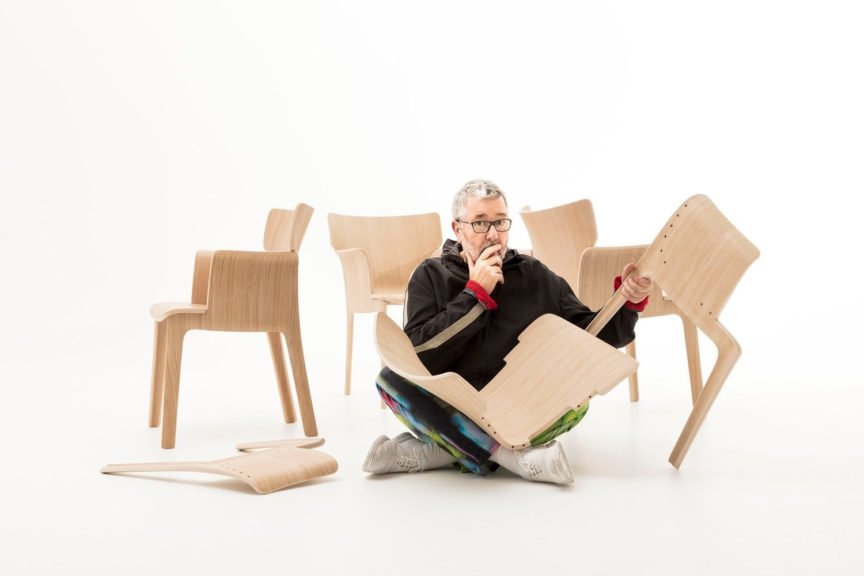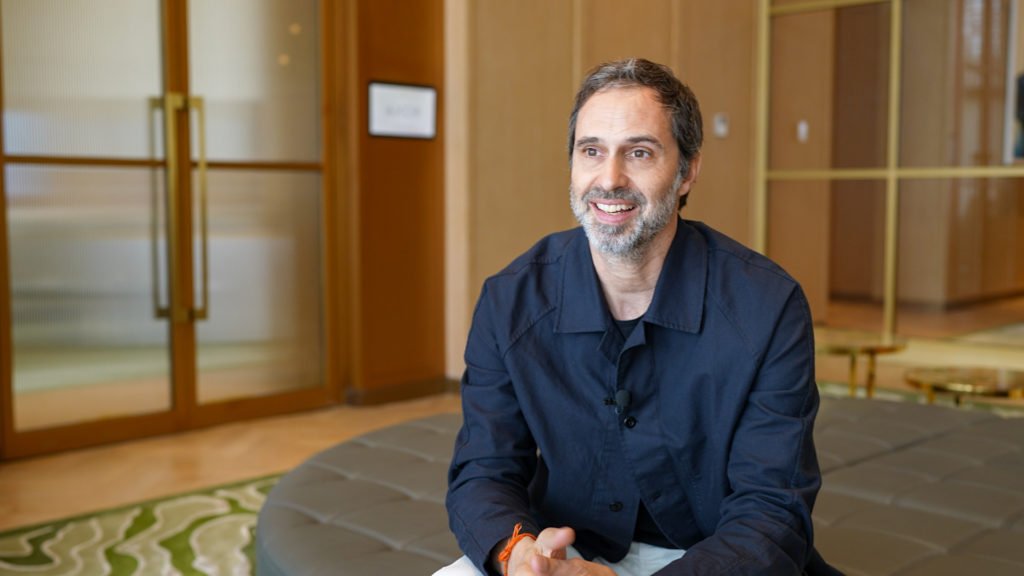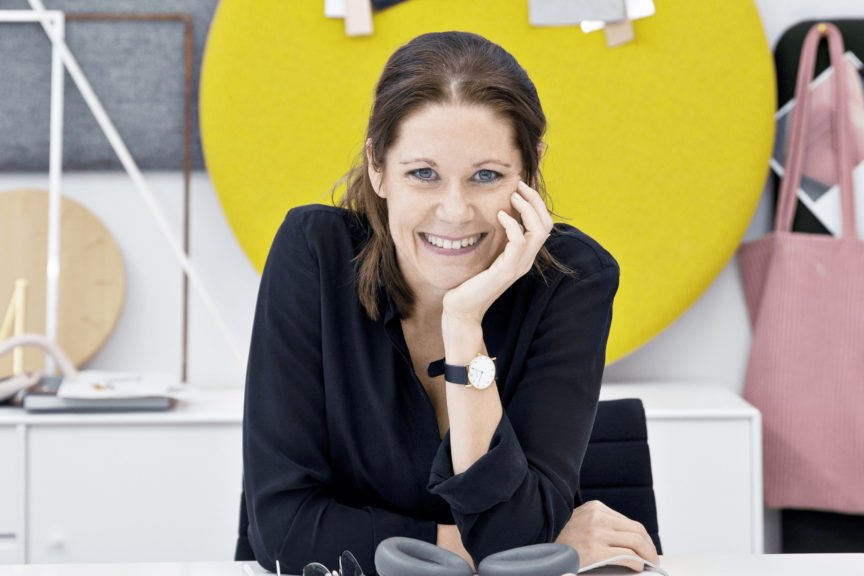A multi award-winning, multi-hyphenate talent, designer Sebastian Herkner is an all-star already. And yet he continues to burn bright, confessing to an insatiable and constant pursuit of inspiration in all aspects of his life. “It’s why I could never do a beach holiday!” Love That Design spends a wonderful afternoon uncovering the many facets of this complex, intriguing soul.
At only 40, he has won the IF Award, the Iconic Award, and the Elle Deco International Design Award (EDIDA), and Maison&Objet has elected him ‘2019 Designer of the Year’. With a brand collaboration resume that reads like the who’s who of product design – Pedrali, Cappellini, ClassiCon, Dedon, Ex.t, Fontana Arte, Gubi, Moroso, Fritz Hansen, Rosenthal… the list goes on – he has given the 21st century future furniture icons. His work spans interior architecture projects too, as well as museum and exhibition design, and to all his design disciplines, he brings an intuitive understanding of colour, texture and form. In short, design that speaks to the senses.
Pipe Collection for Moroso
Could you tell us about your design philosophy and brand collaborations over the years?
Over the years I’ve worked a lot with European brands like Cappellini, Moroso, Dedon and others, mostly companies with a deep design and production heritage. But I also like to work with people from countries that are not really on the design ‘map’. I like to get out there and explore the local craft techniques, and find ways to use my own design philosophy and language to develop something together.
In any part of the world, the younger generation always wants to move to the capital of their country. For example, in Bogota, which has a population of 10 million, the upcoming talent that grew up in the countryside and learnt crafts (rug making, weaving, pottery) wants to work in the capital. But because they are not educated, many of them end up in the slums. So, in our operation in Colombia, we now have around 70 people from these slums who work for us using their craft skills and through the work, they learn not only to appreciate the craft and cultural heritage of their grandparents, but also a pathway to the capital. That’s one of the nice social aspects of my work.
“I think design has to be about sustainability, responsibility, and respect”
– Sebastian Herkner
It’s also always been about the balance between innovation and tradition, craftsmanship and engineering. For me, it all began in Offenbach where I started my studio in 2001. Offenbach was once the centre of leather production in Germany, but gradually all the production moved to Italy and Taiwan, which was much cheaper. After that, Offenbach somehow almost lost its identity and so needed to reinvent itself. This was a very interesting moment in time for me, in terms of understanding the value of craft. One of my first products was the Bell Table for ClassiCon. The idea was to combine glassblowing with metal spinning, with the glass produced in Bavaria by a company that is 450 years old. When I did it the first time in 2009, no one was interested in it because they thought glass was old fashioned and they wanted new materials. Then three years later in 2012, ClassiCon asked if they could produce it, and now it’s one of their bestsellers.
For me, it’s important that a product is good quality because that’s the best way to make it sustainable – investing in design or art that you don’t just replace after only two years. That’s why I want my product to become a companion for life, like a partner, and that is why selecting materials that age well is extremely important – like leather that will get a patina over time. This philosophy, which I’ve held for 14 years, means having the right partners who believe in ideas like quality, local craftsmanship and production. And share the same vision.
Armchair 594 for Rolf Benz; Mbrace Aluminium for Dedon; Host for Stellar Works; Chairs for Thonet; Bell Table for Classicon
So how do you choose your collaborators?
At the beginning, it was difficult because I was still building a name. I had to knock on a lot of doors. At that early stage, having a brand’s support behind you is important, and at Salone in 2009, it was really the brand pushing me because they liked my table. I started with ClassiCon, and then Moroso, and so on. However, now it is the companies that approach us, so we need to be selective. At the start, I always have a call or visit the brand to understand their philosophy, learn about their CEO and their art director, and also see the craftsmen, their working conditions, the atmosphere, where they come from, where do they want to go, what is their vision? For instance, Pedrali is a family business run by brother and sister, Giuseppe and Monica Pedrali, who are very down to earth. They invest a lot in moulds and tooling, design and development, and that allows them to be more sustainable – even down to their packaging, because everything is done in-house.
It’s always a very personal decision because designing a product can sometimes take years. So, you need good partnerships. Just like a relationship, it’s a lot of work and a long process, so you need a reliable partner on the other side.
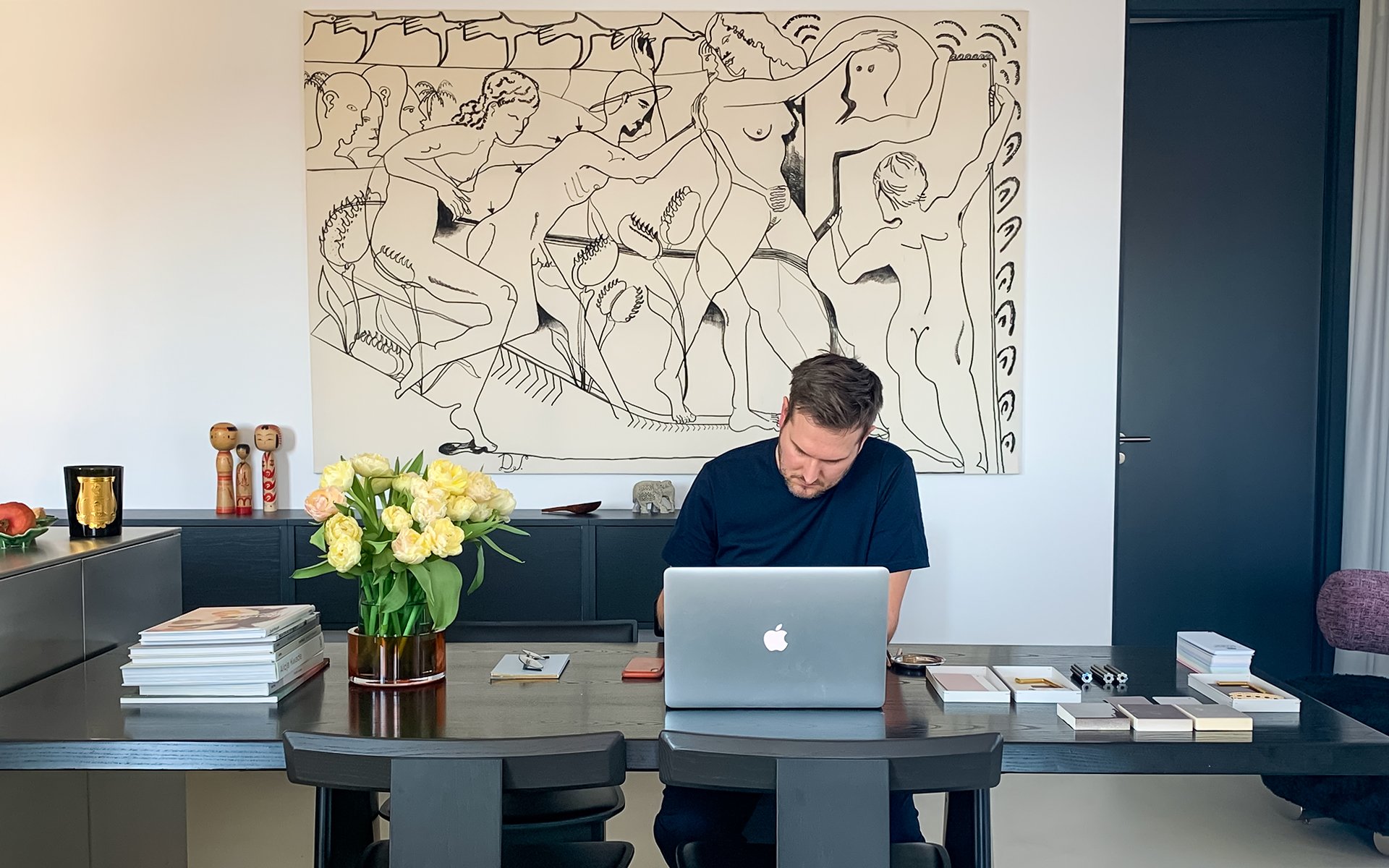
What has been a particularly challenging or exciting design?
When I design, I try to do something that fits in not only with my design language, but also the needs of the client. I think it’s a designer’s responsibility to ensure that a product works well in a client’s portfolio, and is also bound to be successful. Because it’s not just important for the brand that it sells, but also for my team – designers are mostly paid by the royalties they get from sales, so if the product is selling, you also make money. But if it’s not, you get nothing.
Also, the idea, and the dream, is to develop something unique, which sometimes goes against the grain and not in the direction of a trend. A good example of that would be the Bell Table. It’s not just something people will love, but also something that makes people stop and think, and question and perhaps react to.
If not a designer, what would you be?
I would be a chef. It’s very similar to my profession – you need the right ingredients, the right tools, and you need fantasy. And it’s also something that’s created for an audience. In design, I think it’s so important to use the senses. Nowadays, people don’t do that anymore because they are just on their smartphone or tablet. It is such a privilege to use all your senses and design is about sense in the same way that cooking is.
Fritz Hansen’s Let chair; Blume Collection for Pedrali
What are you working on at the moment?
We’re working on a couple of projects with new clients, and existing clients. A new outdoor collection for Dedon, some extensions to the collection for Pedrali. We’re also doing an interior for an ice cream shop in Germany. It’s quite diverse and I really like it.
You mentioned that you worked with Stella McCartney in London?
It happened by coincidence. I had done a few fashion pieces for some friends in London, which they’d seen, and her assistant offered me a role there. It was Stella’s second year with her own brand (2003) and I was just 23 years old. It was good in that it was a different game, different materials, different typology, and I really liked the interdisciplinary process. Stella also has her own design attitude and philosophy from the beginning – even then she was designing without fur and without leather, which was brave and unusual at the time. It’s so important for every designer to find their own philosophy and direction.
So young and on your way to becoming a star already. How does that feel? Do you see others in that same category?
There are others with similar successes, like Luca Nichetto and Jaime Hayon, who are more or less the same age, but I don’t really focus on this. I’m still living in the same small city, and never moved to a big, thriving metropolis. I’m very privileged in terms of being happy about the companies I work with. On the other hand it’s just my passion, you know… my soul. For me designing is not really a job. It is an amazing profession, and I don’t think there are that many people who are so happy doing what they do.
Stellar Grape for Pulpo; Vibia’s Kontur; Loon for Dedon; Metropole Collection for Rakumba
What advice would you give aspiring designers?
I always say, and I believe in this, that there’s no need to move to the big ‘design’ cities like New York, London, Paris, or Milan to make it. The most important thing is to feel comfortable where you are, to be able to afford it, and have the time and space to free your mind to be creative. At the end you just need to be happy.
What’s the best advice you’ve ever received?
I was told to develop my own design language, believe in my dreams, and work work work on them. If you really want to run your own business, at the beginning it’s a seven day a week job.
What can you tell us about Sebastian, the person?
I have a partner. I have very good friends. I have a super normal life, quite conservative even. However, I don’t like to get bored and that can sometimes be stressful for others because I always need some sort of action. If I travel, I need to see things, and find inspiration, and so a beach vacation is just not for me! I am always looking to discover something new, and I need food for my creativity. During lockdown, my source of inspiration was the memories of the moments and experiences I had over the last few years of travelling… all the colours, smells, and details carried me through this time.

